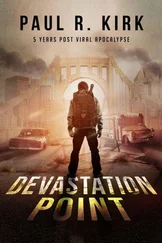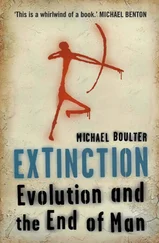Lorentz was a distinguished looking man. At seventy, he still had a full head of hair, sparingly peppered here-and-there with the odd brush stroke of gray that he insisted on keeping slicked back across his pate. Although he liked to dress casually, he always gave the impression he would have felt just at ease in a business suit or a tuxedo rather than the khaki slacks and polo shirt he wore beneath his ubiquitous white lab overcoat. A full mouth that was quick to grin and rarely frowned complemented his lean face and long Romanic nose.
Well known around the lab for being a stickler for his daily exercise, the professor would routinely break off a meeting if it interrupted his lunchtime workout regimen. Fit and lean, he was still a good-looking man for his age, his broad shoulders and toned arms often allowing him to be mistaken for a decade less than his actual age.
There was no Mrs. Lorentz. When asked why he had never married, he would reply in his most charming voice ‘ Not married? Have you not met my wife? ’ while indicating the lab with a sweeping hand.
Those close to him, of which there were few, knew that he was too dedicated to his work to inflict his obsessive pursuits and eccentric time-tables on a wife. Not that there had been a lack of interest on the opposite sexes part, but it became quickly apparent to any woman who entered his life that work was his first and only true love.
He had started out as a research assistant almost fifty years earlier, working for JPL out of California after graduating summa-cum-laude at Cal-Tech with a degree in Advanced Applied and Theoretical Physics. Part of the original NASA team that formulated the design of the first manned mission to Mars he had left the agency after the disastrous loss of the ship and its four man crew in 2017.
Despite the failure of the Mars project he quickly advanced, thanks in part to his capability as a project-manager but in no small way to his work on theoretical particles. Within ten years, he had gone on to head-up the research department at TachDyne Research Industries where he had received his first of two Nobel prizes for Science.
In 2030, just a few years after leaving TachDyne to open his own research lab in Pasadena, he had received his second Nobel prize for his company’s work on superluminal propagation, proving finally the existence of that long disputed particle; the Tachyon. Long thought to be the equivalent of a scientific Snipe hunt, Lorentz proved its existence beyond a doubt when he simultaneously disproved the paradox of Gödel’s time-travel in a rotating-Universe theory and proved the veracity of the reinterpretation principle, a theorem now known as the Lorentz Effect .
A few months after receiving the second Nobel, he sold his company to Aberdeen Enterprises and used the profits (which were considerable) to create a small start-up in Reno where he returned to his first love: hands on physics.
Dr. Lorentz spoke into a lapel mike attached to his lab-coat. “Edward, are you about ready?”
Lorentz voice was calm and level, and it amazed Drake. Here they were on the verge of an experiment that would revolutionize the communications industry and the Professor showed no signs of excitement at the prospect. She had worked with him for long enough to understand, she believed, why that was. He was one of those men who enjoyed the chase, the existence of the puzzle rather than its solving. It gave little gratification to him to know that he had potentially succeeded in his goal. She found that odd, alien even in this results driven world where she had spent her last few years.
Three rooms further down the corridor from the room that held the transmitter box, a similar box sat in a similar room. Instead of the connectors for the VR-Comp and microphone, this box had only one for an ancient Bose speaker that was resting on the table next to it, connected by a length of twisted speaker-wire.
A young man, his eyes owlishly amplified by his thick glasses, sat with the lid of the receiver resting next to him on the table. A soldering iron in hand, he was deep in the wiring of the machine, his shoulders hunched tightly as he maneuvered carefully through its electronic guts. A thin plume of gray smoke rose into the air as he secured a new component in place and the acrid smell of hot solder floated through the air.
“Just finishing up, Doc,” he said in a basso-profundo voice that belied his wiry body. “Give me about five more minutes and we’ll be ready to roll.”
Back in his room, Dr. Lorentz pulled up a second virtual-display on the VR-comp and using his index finger to highlight and capture the data on the first display, pulled a duplicate across to the second screen that seemed to hang in the air a few feet in front of his face. Thanks to the holo-projectors located strategically around the room, no matter where Lorentz or any of his staff moved, the display screen of the VR-comp would follow them, always at the optimal position and angle for reading. As Lorentz walked around the room, the screens became transparent to allow him unhindered vision, coalescing once again back into visibility when he stopped moving.
Data was collected through the myriad sensors scattered throughout the room, or if manual entry or adjustment was required then by voice or hand; alleviating the need for physical keyboards. The main CPU that drove the system was located in its own room elsewhere within the laboratory complex.
“ Alright ,” came Edward’s voice over the com-link,” just running the diagnostics… and… couple more seconds… okay, everything’s kosher here Doc .”
“Thank you Edward.” Professor Lorentz pressed an icon outlined in red on the floating display in front of him and ‘ RECORDING’began to flash at the top of the VR screen.
“Okay team, we are up and running. Everybody stand by, please,” he said.
The computer now began churning through an automated program, displaying each step and its result onscreen. Although everybody on the project was receiving the same feed, and the VR-Comp was recording everything in real time, Lorentz still read each step aloud as the computer progressed — old habits died hard, at his age.
“Phase 1 Diagnostics: Complete.” And: “Phase 2: Diagnostics: complete. System Diagnosis: Optimal.”
The transformer in the corner of the room began to power-up, emitting a low whine that rattled the protective bars of its cage like a monkey testing the security of its enclosure. The whine slowly grew in pitch until it passed out of the range of human hearing, leaving behind a low thrum that reverberated through the walls and across the floor of the lab.
Then: “Power: Engaged.” The old scientist’s screen flashed a message in bold green letters:
System Diagnosis: Completed.
Power Level: Optimal.
And a few lines underneath that, outlined by a flashing red border, a single icon glowed beckoningly. ENGAGE? it blinked.
He regarded the screen for a few moments longer, savoring the moment before finally turning to look directly at the black box on its table and his associate professor standing expectantly next to it, holding the microphone in her hand.
“Alright, fire her up,” he whispered and pressed the engage icon.
Everything changed .
PART-TWO
- Towards Yesterday -
“It is hard to have patience with people who say ‘There is no death’ or ‘Death doesn’t matter.’ There is death and whatever is matters.”
C. S. Lewis
“Many that live deserve death. And some that die deserve life.”
J.R.R. Tolkien
Читать дальше












